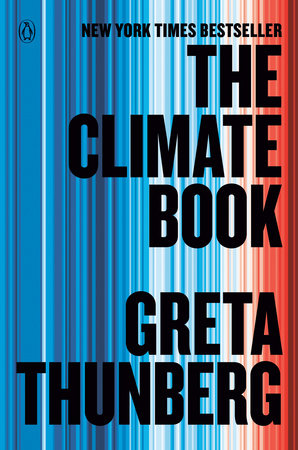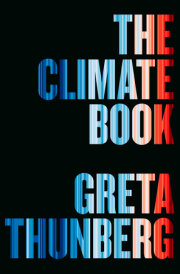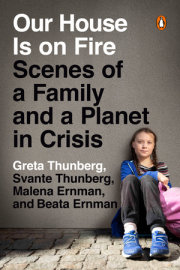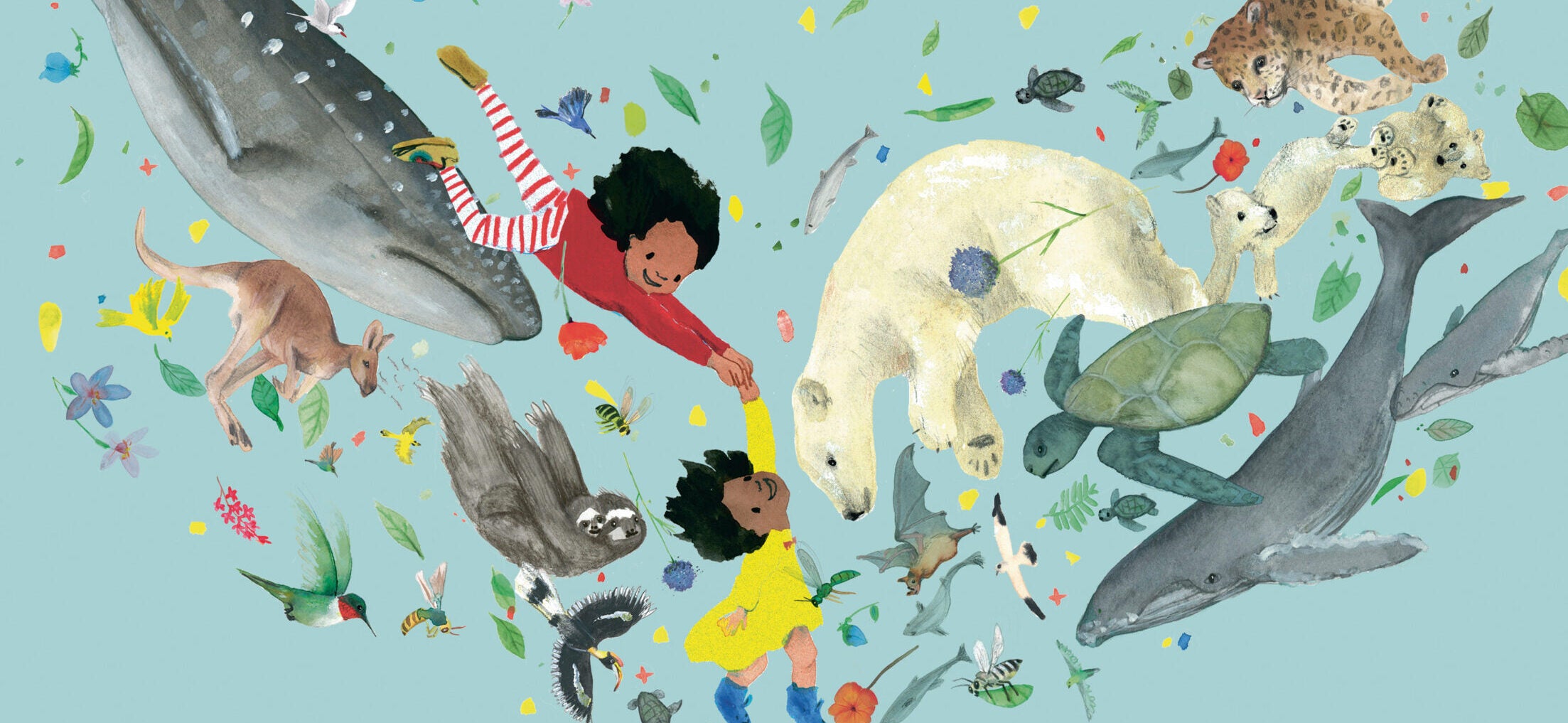1.1
To solve this problem, we need to understand it.
Greta Thunberg
The climate and ecological crisis is the greatest threat that humanity has ever faced. It will no doubt be the issue that will define and shape our future everyday life like no other. This is painfully clear. In the last few years, the way we see and talk about the crisis has started to shift. But since we have wasted so many decades ignoring and downplaying this escalating emergency, our societies are still in a state of denial. This is, after all, the age of communication, where what you say can easily outweigh what you do. That is how we have ended up with such a great number of major fossil-fuel- producing – and high-emitting – nations calling themselves climate leaders, despite not having any credible climate mitigation policies in place. This is the age of the great greenwashing machine.
There are no black-and-white issues in life. No categorical answers. Everything is a subject for endless debate and compromise. This is one of the core principles of our current society. A society which, when it comes to sustainability, has a lot to answer for. Because that core principle is wrong. There
are some issues that are black and white. There are indeed planetary and societal boundaries that must not be crossed. For instance, we think our societies can be a little bit more or a little bit less sustainable. But in the long run you cannot be a little bit sustainable – either you are sustainable or you are unsustainable. It is like walking on thin ice – either it carries your weight, or it does not. Either you make it to the shore, or you fall into the deep, dark, cold waters. And if that should happen to us, there will not be any nearby planet coming to our rescue. We are completely on our own.
It is my genuine belief that the only way we will be able to avoid the worst consequences of this emerging existential crisis is if we create a critical mass of people who demand the changes required. For that to happen, we need to rapidly spread awareness, because the general public still lacks much of the basic knowledge that is necessary to understand the dire situation we are in. My wish is to be part of the effort to change that.
I have decided to use my platform to create a book based on the current best available science – a book that covers the climate, ecological and sustainability crisis holistically. Because the climate crisis is, of course, only a symptom of a much larger sustainability crisis. My hope is that this book might be some kind of go-to source for understanding these different, closely interconnected crises.
In 2021, I invited a great number of leading scientists and experts, and activists, authors and storytellers to contribute with their individual expertise. This book is the result of their work: a comprehensive collection of facts,stories, graphs and photographs showing some of the different faces of the sustainability crisis with a clear focus on climate and ecology.
It covers everything from melting ice shelves to economics, from fast fashion to the loss of species, from pandemics to vanishing islands, from deforestation to the loss of fertile soils, from water shortages to Indigenous sovereignty, from future food production to carbon budgets – and it lays bare the actions of those responsible and the failures of those who should have already shared this information with the citizens of the world.There is still time for us to avoid the worst outcomes. There is still hope, but not if we continue as we are today. To solve this problem, we first need to understand it – and to understand the fact that the problem itself is by definition a series of interconnected problems. We need to lay out the facts and tell it like it is. Science is a tool, and we all need to learn how to use it.
We also need to answer some fundamental questions. Like, what is it, exactly, we want to solve in the first place? What is our goal? Is it to lower emissions, or to be able to go on living as we are today? Is our goal to safeguard present and future living conditions, or is it to maintain a high consumption way of life? Is there such a thing as green growth? And can we have eternal economic growth on a finite planet?
Right now, many of us are in need of hope. But what is hope? And hope for whom? Hope for those of us who have created the problem, or for those who are already suffering its consequences? And can our desire to deliver this hope get in the way of taking action and therefore risk doing more harm than good?
The richest 1 per cent of the world’s population are responsible for more than twice as much carbon pollution as the people who make up the poorest half of humanity.
Perhaps, if you are one of the 19 million US citizens or the 4 million citizens of China who belong to that top 1 per cent – along with everyone else who has a net worth of $1,055,337 or more – then hope is perhaps not what you need the most. At least not from an objective perspective.
Of course, we hear, some progress is being made. Some nations and regions report quite astonishing reductions in CO2 emissions – or at least in the years since the world first started negotiating the frameworks for how we manage our statistics. But how do all those reductions hold up once we include our total emissions, rather than carefully managed territorial statistics? In other words, all those emissions that we so successfully negotiated out of these figures. For instance, outsourcing factories to distant parts of the world and negotiating emissions from international aviation and shipping out of our statistics – which means that we not only manufacture our products by using cheap labour and exploiting people, we also erase the associated emissions – emissions that have, in reality, increased. Is that progress?
To stay in line with our international climate targets we need to get our individual per capita emissions down to somewhere around 1 tonne of carbon dioxide a year. In Sweden, that figure currently stands at around9 tonnes, once you include consumption of imported goods. In the US that figure is 17.1 tonnes, in Canada 15.4 tonnes, in Australia 14.9 tonnes and in China 6.6 tonnes. When you add biogenic emissions – such as emissions from the burning of wood and vegetation – those figures will in many cases be even higher. And in forestry nations such as Sweden and Canada,significantly higher.
Keeping emissions below 1 tonne per person a year will not be a problem for the majority of the world’s population, since they will only need to make modest reductions – if any – in order to live inside the planetary boundaries. In many cases, they would even be able to increase their emissions quite substantially.
But the idea that countries such as Germany, Italy, Switzerland,New Zealand, Norway, and so on will be able to achieve such enormous reductions within a couple of decades without major systemic transformations is naive. And still this is what the leaders of the so-called Global North are suggesting will happen. In Part Four of this book we will be looking at how that progress is coming along.
Some people believe that if they were to join the climate movement now, they would be among the last. But that is very far from true. In fact,if you do decide to take action now, you would still be a pioneer. The final part of this book focuses on solutions and things we can actually do to make real difference, from small, individual actions to a planetary system change.
This book is intended to be democratic, because democracy is our best tool to solve this crisis. There may be subtle disagreements between the people writing from the front lines. Each person in this book is speaking from their own point of view and may arrive at different conclusions. However, we need all of their collective wisdom if we are to create the enormous public pressure required to make change. And rather than having one or two ‘communication experts’ or individual scientists drawing all the conclusions for you as a reader, the idea behind this book is that, taken together, their knowledge in their respective areas of expertise will lead you to a point where you can start to connect the dots yourself. At least, this is my hope. Because I believe the most important conclusions are yet to be drawn – and hopefully they will be drawn by you.
Copyright © 2023 by Greta Thunberg. All rights reserved. No part of this excerpt may be reproduced or reprinted without permission in writing from the publisher.










